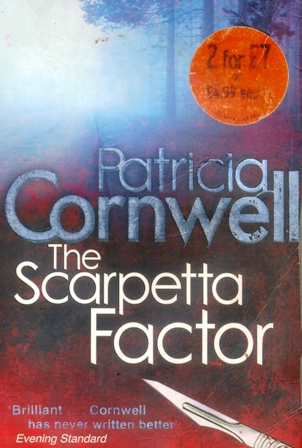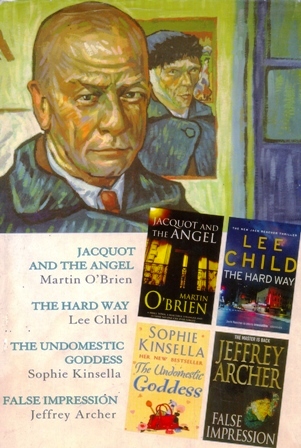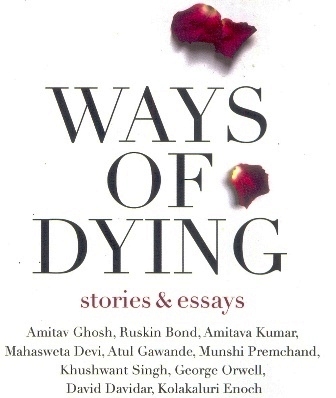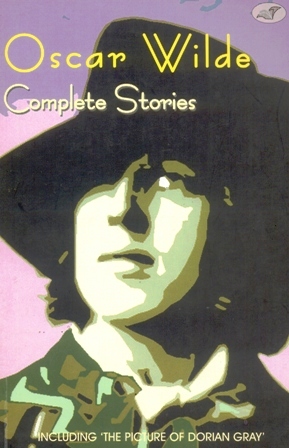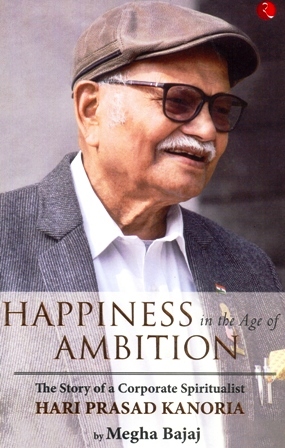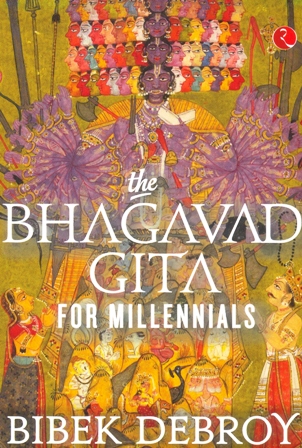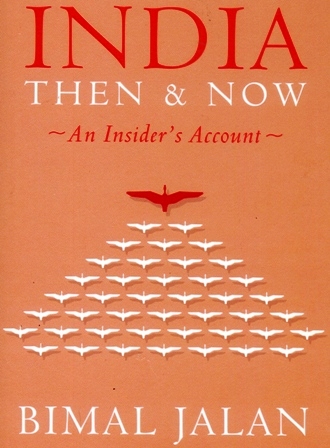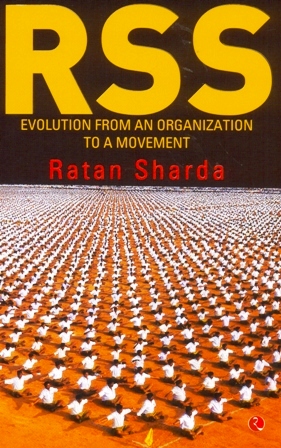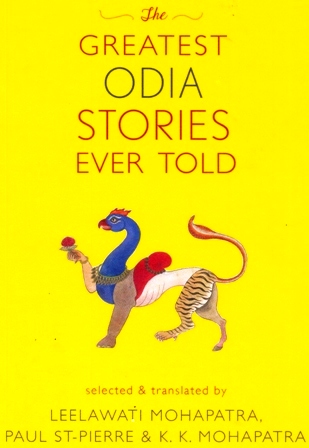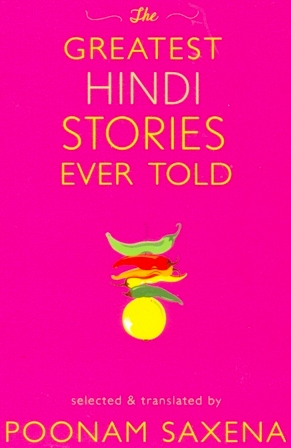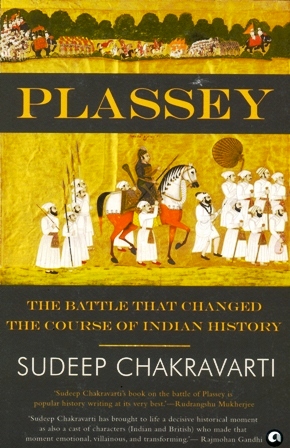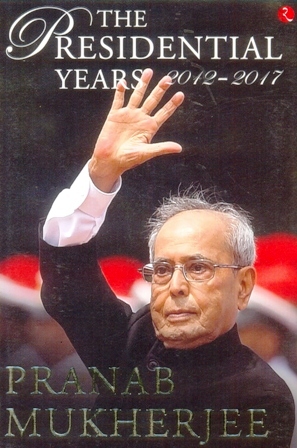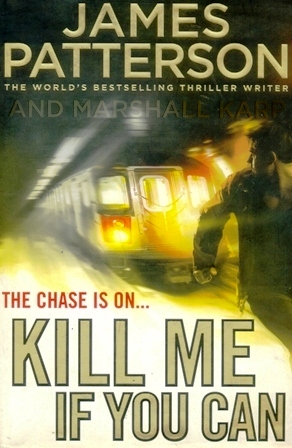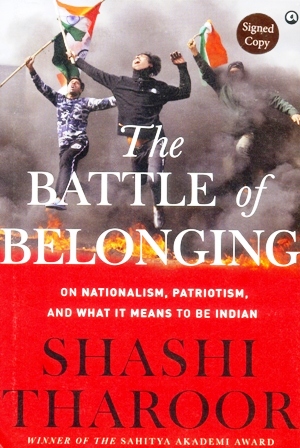-
The Scarpetta Factor
The seventeenth book in the Kay Scarpetta series, from No. 1 bestselling author Patricia Cornwell. 'America's most chilling writer of crime fiction' The Times It is the week before Christmas. The effects of the credit crunch have prompted Dr Kay Scarpetta to offer her services pro bono to New York City's Office of the Chief Medical Examiner. But in no time at all, her increased visibility seems to precipitate a string of dramatic and unsettling events. She is asked live on the air about the sensational case of Hannah Starr, who has vanished and is presumed dead. Moments later during the same broadcast, she receives a startling call-in from a former psychiatric patient of Benton Wesley's. When she returns after the show to the apartment where she and Benton live, she finds a suspicious package - possibly a bomb - waiting for her at the front desk. Soon the apparent threat on Scarpetta's life finds her embroiled in a deadly plot that includes a famous actor accused of an unthinkable sex crime and the disappearance of a beautiful millionairess with whom Scarpetta's niece Lucy seems to have shared a secret past....
-
Hercule Poirot The Complete Short Stories
All 51 Hercule Poirot short stories presented in chonological order in a single volume – plus a bonus story not seen for more than 70 years. ‘My name is Hercule Poirot and I am probably the greatest detective in the world.’ The dapper, moustache-twirling little Belgian with the egg-shaped head, curious mannerisms and inordinate respect for his own ‘little grey cells’ has solved some of the most puzzling crimes of the century. Appearing in Agatha Christie’s very first novel in 1920 and her very last in 1975, Hercule Poirot became the most celebrated detective since Sherlock Holmes, appearing in 33 novels, a play, and these 51 short stories. Arranged in their original publication order, these short stories provide a feast for hardened Agatha Christie addicts as well as those who have grown to love the detective through his many film and television appearances. This edition now also includes Poirot and the Regatta Mystery, an early version of an Agatha Christie story not published since 1936!
-
26 11 Braveheart My Encounter With Terrorists That
Four bullets ripped through his body; a lung was punctured; four ribs were shattered and splinters scattered all over his chest; doctors attending to him declared that his life had been cut short, that he could never swim or run. But he proved everyone wrong. On the night of the 26/11 terrorist attacks on Mumbai, marine commandos of the Indian Navy (Marcos) entered the Taj, one of the places held captive by Lashkar-e-Taiba terrorists. Their brief was simple—rescue the hostages and neutralize the attackers. Decorated with the Shaurya Chakra for his role in rescuing hostages, Praveen Kumar teotia was one of the Marcos who was leading his team, who fought the terrorists, suffered near-fatal injuries and, in the end, saved more than 150 innocent lives. In this gripping, edge-of-the-seat thriller, teotia narrates a minute-by-minute account of that deadly night, how his team entered the Taj, how he confronted the terrorists and how he was nearly killed. Declared unfit for life until he fought back and became a marathon Runner and the coveted ironman, praveen’s is a story of courage, conviction and resurrection. Above all, this is a story of an Indian soldier.
-
Padmavati The Harlot And Other Stories
One of the pioneers of feminist writing in India, Kamala Das is known for her provocative writing on female sexuality and desire. Padmavati the harlot and other Stories includes some of her very best fiction. In ‘a little kitten’, a newly married woman finds her life turning dull and insipid as the tedium of marriage begins to settle in. An old woman believes she is a princess and is delighted to be courted by three suitors in ‘the princess of avanti’. a man realizes, too late, that he is in love with the woman he is breaking up with in ‘the sea lounge’. in these and other Stories, Kamala Das is bold and unflinching in her exploration of themes such as violence, desire, sex, marriage, family, communalism, and death. Foreword by jaisurya Das.
-
Ways Of Dying Stories And Essays
Amitav Ghosh George Orwell Khushwant singh Ruskin Bond Mahashweta Devi Munshi Premchand Amitava Kumar Atul GawandeOne of the meanings of the word ‘olio’ is ‘a miscellany’. The books in the Aleph Olio series contain a mélange of the best writing to be had on a variety of themes, and present aspects of India and Indian life in ways that have seldom been seen before. Ways of Dying comprises stories and essays of deep insight into an inevitable part of life—death. The pieces in the book include Amitav Ghosh on the assassination of Indira Gandhi and its aftermath, Ruskin Bond on memories of his father’s funeral, Amitava Kumar on how it is necessary to find comfort and solace in the midst of profound grief, Mahasweta Devi on murder and revenge in rural India, and Atul Gawande on assisted suicide and what doctors fear the most when faced with the mortality of their patients. Elsewhere in the anthology, the reader will find one of Munshi Premchand’s greatest stories, ‘The Shroud’, a peerless meditation on the hypocrisies and feigned grief of dysfunctional families on the death of a family member, balanced by Khushwant Singh’s poignant essay on the death of his beloved grandmother. Rounding out the selection are George Orwell on the complex reasons that often lead to innocent blood being shed, David Davidar on the sadness and turmoil that whirls through a family upon the death of a patriarch, and Kolakaluri Enoch on the tragic death of a young girl.
-
My Son's Inheritence A Secret History Of Lynching
My Son’s Inheritance: A Secret History of Lynching and Blood Justice in India is a provocative and disturbing examination of the history of lynching in the country. Aparna Vaidik’s investigation traverses several centuries and offers powerful insights into the phenomenon. She demonstrates how violence is secretly embedded in our myths, folklore, poetry, literature, and language, and is therefore invisible. She delves deep into family history to further illuminate how widespread violence is in Indian society. Framing her narrative as a message to her son, she acquaints him with his ancestors—those who abet and carry out lynching as well as those who are lynched. In this way, her son embodies both the violator and the violated, much like the country in which he will come of age. She lays bare the heritage of violence bequeathed from generation to generation and disabuses us of the myth that non-violence and tolerance are the essence of Indian culture. She argues that the perpetrators of violence are not just the state, the rulers, the police or the army but all of us who, through our silence and indifference, foster and perpetuate violence in India. My Son’s Inheritance is a groundbreaking exploration of the phenomenon of lynching and the larger culture of violence that invests the social and political fabric of the country.
-
Oscar Wilde Complete Stories
Somehow or other I will be famous, and if not famous, I will be notorious', declared Oscar Wilde. He proved to be both. Oscar Wilde was a genius and he transformed his talent into his stories, plays and poems. The world in which Oscar Wilde lived was riddled with hypocrisy and he exposed it in his writings. His only novel, "The Picture of Dorian Gray' was published in Lippincott's Monthly Magazine in 1890 and provoked a storm of protest from the Victorian society. 'It is a tale spawned from the leprous literature of the French decadents — a poisoned book, the atmosphere of which is heavy with mephitic odours of moral and spiritual putrefaction', wrote the critic from the Daily Chronicle. Oscar Wilde wrote a preface, which appeared separately in the Fortnightly Review in March 1891. It contains the famous passage : 'Books are well written, or badly written. That is all'. This volume contains Oscar Wilde's only novel, 'The Picture of Dorian Gray' and all other stories. All stories are complete & unabridged.
-
Quadehar The Sorcerer
The first book in an action-packed fantasy trilogy. The Book of Stars from an up-and-coming talented new French author. Welcome to the island of the Ys, a piece of land lost somewhere beween the Real World and the Unsure World. On the Ys, children go to school and play games just like other children, but they also live among knights and wizards who protect them from the dark forces of the Unsure World--a place where bandits, giantsand monstrous creatures live on a treacherous landscape. On the Ys lives is a twelve-year-old boy named Guillemot de Troil, who dreams of becoming a knight. Guillemot lives with his mother, his father having mysteriously disappeared years ago.
-
Happiness In The Age Of Ambition
This is the story of a corporate spiritualist, if ever there was one. It started with a young author Megan bajaj’s quest to find answers to the questions that surrounded her existence it possible to be childlike and yet have the wisdom of an old soul? Is it possible to lead a life that is materialistically abundant and yet spiritually grounded? Her search led her to hard Prasad kanoria, a ‘corporate spiritualist’ whose life had been an example of how to be passionately involved in day-to-day activities and still have a part of the ‘self ’ immersed in the higher consciousness. This was a man who balanced his life on two pillars—faith in God and belief in himself. As Megha explored Hari Prasad’s life, she started finding answers to the everyday dilemmas she had been facing. In happiness in the age of ambition, she takes on the role of a kathavachak (the narrator) to share the extraordinary tale of hard Prasad, who founded several leading enterprises. This book is not just the story of a business legend but an answer to the trials and tribulations of people across the world, as they struggle to find a fine balance to manage the contradictions of life that affect their peace of mind. It is a book for the young and the old alike; for those seeking meaning in life, and those chasing materialistic and spiritual pleasures.
-
The Bhagavad Gita For Millennials
A millennial’s guide to the Bhagavad Gita, the foundational text on dharma. As Arjuna stands on the battlefield of the Great War of Kurukshetra, he finds himself surrounded by men he has known for years. He must wound, maim or kill them to earn what the Pandavas deserve. But how can he kill those in whose laps his childhood was spent, those gurus who taught him to hold his bow? As Arjuna faces this dilemma, Krishna, an avatara of Lord Vishnu, appears before him in his universal form. And thus begins a dialogue between them on what is right and what is wrong, on dharma and on the cycle of cause and consequence. One of the core Hindu scriptures, the Bhagavad Gita holds important lessons on how we can live our lives and fulfil our duties, but the millennials may consider it too ancient for their use or too complex for their understanding. In this book, Bibek Debroy recasts the Bhagavad Gita in a simple and cohesive form for millennials, so that its content and deeper meaning are not lost with the generations of our grandparents and parents.
-
India Then And Now
An inward-looking economy with a State-dominated development programme to a liberalized economy operating in a globalized world—India has indeed come a long way since Independence. In this volume, Bimal Jalan—long-standing witness to India’s trajectory through the decades—gives us a complete picture of the country’s economic journey so far. In the pages of this book we read about broad issues of development policy, the role of science and technology, exchange rate management, globalization and more—all significant themes in the ongoing debate on India’s approach to economic reforms towards 2025 and beyond. Based on extensive research and data, and aided by Jalan’s experience as the former governor of the Reserve Bank of India, this book, more importantly, also gives us a vision for the way ahead. As India—and indeed the world—faces challenging times, the recounting of tales from India’s economic history, when accompanied by the observations and wisdom of a senior economist like Bimal Jalan, can help allay fears and give optimism for the times to come.
-
Himalayan Challenge India China And The Quest For
In September 1978, at the invitation of the prestigious Chinese people’s Institute of foreign affairs, Subramanian Swamy, then a Lok Sabha member of Parliament of the ruling Janata party and an elected member of the Party’s National executive, travelled to China as an envoy of the then prime Minister, Morarji Desai, where he met senior leader Ji pengfei. This led to the first contact, since 1962, between the ruling parties of both countries. Later, in April 1981, Swamy, the then deputy leader of the opposition, was invited to meet China’s Supreme leader, Chairman Deng Xiaoping. In this historic 100-minute meeting, Swamy successfully persuaded Deng to reopen the—Kailash Mansarovar route for Hindu pilgrims. In August that year, he also led the first delegation to the holy site, which he Revisited as a guest of the Chinese government in June 2016. It is this vast, first-hand experience that Swamy combines with a provocative exploration of historical sources and fascinating new insights to create Himalayan challenge—the most compelling and definitive account of India–China relations. From uncovering the perfidy committed by the British vis-a-vis the McMahon line in 1936 and the circumstances leading to the folly of war in 1962, to the current fluid situation at the border, this seminal work effortlessly blends meticulous scholarship and memoir-style writing in an intellectually rich fashion. Swamy breaks new ground when he suggests a middle path—grounded in pragmatism, and not carried out over fear or overreaction—that India must take in her interactions with China.
-
RSS Evolution From An Organization To A Movement
What makes the RSS unique? How has the Rashtriya Swayamsevak Sangh evolved from a ‘shakha’-based organization, which started in an obscure corner of Nagpur in 1925, to a pan-global movement? How is it possible for an organization not to split in nearly 100 years of its existence? Part of the answer lies in the personality of the heads of the RSS or Sarsanghchalaks as they are respectfully called. Each of the Sarsanghchalaks, from Dr Keshav Baliram Hedgewar to Dr Mohan Bhagwat, has played a key role in guiding and shaping the organization, helping it to evolve into a body that has shown exponential growth while playing a major role in the renaissance of Hindu dharma. Accessing RSS documents, written originally in Marathi and Hindi, conducting meticulous research in the archives, and relying on letters, official statements, resolutions, and his first-hand knowledge of working with five out of six Sarsanghchalaks, the author provides a holistic study of the evolution of the RSS. The hundredth anniversary of the founding of the RSS is less than five years away. For the first time, readers will now be able to have a historic, factual and authentic understanding of this gigantic people’s movement, told by an insider.
-
The Greatest Odia Stories Ever Told
The greatest Odia stories ever told showcases odia’s greatest storytellers ranging from literary masters such as fakir Mohan Senapati, Gopinath Mohanty, Reba Ray and man's Das to contemporary stalwarts like Pratibha Ray and nrusingha Tripathi, among others. A young woman who was dragged away by a crocodile mysteriously resurfaces after a decade in Manoj das’s ‘Mrs crocodile’; a pet goat let loose in a government Office causes amusement and chaos in Gopinath Mohanty’s ‘the solution’; Godavari's mahapatra’s ‘maguni’s bullock cart’ deals with the anxieties of a bullock cart driver stuck between the trappings of traditions and modernity stories in this anthology traverse an exciting range of themes from fantasy to reality and bone-chilling horror to rib-tickling humour. Timeless, evocative and striking, the greatest Odia stories ever told offers a rich selection of stories that are unrivalled in their range, style and complexity. Selected and translated by leelawati Mohapatra, Paul st-pierre and K. K. Mohapatra, the twenty-four stories in this volume showcase the finest short fiction in Odia literature.
-
Princestan How Nehru Patel And Mountbatten Made In
In the run-up to independence, a vile plan was devised by a handful of powerful princes to not join either India or Pakistan. The plan was led by the Chancellor of the chamber of princes, Nawab of Bhopal, who was operating under the patronage of Mohd. Ali Jinnah, Lord wavell and British prime Minister Winston Churchill. The idea was to create a third dominion called princestan where the 565 princely states would stay outside the ambit of the two free states and retain paramountcy under the aegis of the departing British. The success of such a malevolent plan would have made the newly independent nation unstable and vulnerable. However, three persons stood in the way of the nefarious British plan to balkanize India. This is the hitherto untold story of how Jawaharlal Nehru, Lord Mountbatten and Sardar Patel battled the rulers of the princely states at every twist and turn to foil that cunning plan, even as the process of decolonization had begun.
-
The Greatest Hindi Stories Ever Told
The twenty-five stories in The Greatest Hindi Stories Ever Told represent the finest short fiction in Hindi literature. Selected and translated by editor, writer, and translator Poonam Saxena, and ranging from early literary masters of the form such as Premchand, Chandradhar Sharma Guleri, BhishamSahni, HarishankarParsai, Mannu Bhandari, and Shivani to contemporary greats such as AsgharWajahat, Uday Prakash, Sara Rai, and others, the collection has stories of darkness, hope, triumph, anger, and irony. In Premchand’s ‘The Thakur’s Well’, ‘low-caste’ Gangi struggles to find drinking water for her ill husband; in ‘The Times Have Changed’ by Krishna Sobti, the matriarch Shahni bids a heart-breaking farewell to her village during Partition; Krishna BaldevVaid’s ‘Escape’ is a telling story about women’s yearning for freedom; Yashpal’s ‘Phoolo’s Kurta’ is a sharp commentary on child marriage and notions of female modesty; in BhishamSahni’s ‘A Feast for the Boss’ and Usha Priyamvada’s ‘The Homecoming’, ageing parents find themselves tragically out of sync with their family; Amarkant’s ‘City of Death’ looks at the fragile thread that holds together communal peace; PhanishwarnathRenu’s ‘The Third Vow’ features the lovable bullock-cart driver Hiraman; Bhagwaticharan Varma’s ‘Atonement’ and HarishankarParsai’s ‘The Soul of Bholaram’ are scathing satires; and ‘Tirich’ by contemporary writer Uday Prakash is a surreal tale—these and other stories in the collection are compelling, evocative, and showcase an unforgettable range of brilliant styles, forms, and themes.
-
Plassey The Battle that Changed the Course Of Indi
The Battle of Plassey, fought on 23 June 1757, changed the course of Indian history forever. When the short, sharp hostilities between the forces of the nawab of Bengal, Siraj-ud-daulah, and East India Company troops led by Robert Clive, an ambitious soldier of fortune, ended, Britain was on its way to becoming the dominant force in the region. The eighteenth century was a time of great political churn in the subcontinent. After the death of Emperor Aurangzeb, the Mughal empire began to slowly fracture. In the east, the nawabs of Bengal, who ruled in the name of the Mughals, took the opportunity to break free. By the middle of the century, Siraj-ud-daulah succeeded his grandfather, Alivardi Khan, to the throne of Bengal. The young nawab clashed frequently with the Company as it looked to aggressively expand and safeguard its interests. Their skirmishes led inexorably to Plassey, a decisive battle in a mango orchard by the banks of the Bhagirathi-Hugli. But what was Plassey all about, besides a young nawab who stood in the way of a company’s business plans and a country’s dreams of conquest? Was it really a battle or was it won before it began? What were the politics of the time that permitted Plassey? Why did the British so desperately want Bengal? Who were the faces beyond a callow Siraj and a crafty Clive, the two main combatants? What are the stories behind the spurned general, the ambitious and hateful aunt, the rude and covetous cousin, the insulted banker, the grasping merchant? And how was—is—Plassey seen? By the victors and the vanquished? The colonizer and the colonized? Why does Plassey remain such a fascinating story even today? Using multilingual sources and a multidisciplinary approach, Sudeep Chakravarti answers all these questions and a myriad others with great insight and nuance. Impeccably researched and brilliantly told, Plassey is the best account yet of one of the turning points in Indian history.
-
The Presidential Years 2012-2017
The presidential years gives a fascinating account of how one of the country most respected veteran politicians reshaped the functioning of Rashtrapati Bhavan and responded to tumultuous events as the country first citizen, leaving behind a legacy that will be hard to match. Pranab Mukherjee became President of India after having spent several decades in politics, and there was great speculation over how he would approach his new bipartisan role after having been associated with a political party for so many years of his life. By the time he had served his Term, Mukherjee had won the respect and admiration of people from across the political spectrum, including those who were his rivals when he was a political figure. He had the occasion to work with two prime ministers, belonging to two parties who were (and are) fiercely opposed to each other, and he managed to do so with aplomb.
-
Akbar The Great Mughal
Abu’l Fath Jalal-ud-din Muhammad Akbar, the third Mughal emperor, is widely regarded as one of the greatest rulers in India’s history. During his reign, the Mughal Empire was one of the wealthiest in the world, and covered much of the Indian subcontinent. Although there are dozens of books on the empire, there are surprisingly few full-length accounts of its most remarkable emperor, with the last major study having been published over two decades ago. In Akbar: The Great Mughal, this outstanding sovereign finally gets his due, and the reader gets the full measure of his extraordinary life. Akbar was born on 15 October 1542 and after a harrowing childhood and a tumultuous struggle for succession following the death of his father, Humayun, became emperor at the age of thirteen. He then ruled for nearly fifty years, and over the course of his reign established an empire that would be hailed as singular, both in its own time and for posterity. In this book, acclaimed writer Ira Mukhoty covers Akbar’s life and times in lavish, illuminating detail. The product of years of reading, research, and study, the biography looks in great detail at every aspect of this exceptional ruler—his ambitions, mistakes, bravery, military genius, empathy for his subjects, and path-breaking efforts to reform the governance of his empire. It delves deep into his open-mindedness, his reverence towards all religions, his efforts towards the emancipation of women, his abolishing of slavery and the religious tax—jiziya—and other acts that showed his statesmanship and humanity. The biography uses recent ground-breaking work by art historians to examine Akbar’s unending curiosity about the world around him, and the role the ateliers played in the succession struggle between him and his heir, Prince Salim (who became Emperor Jahangir). Beautifully written, hugely well-informed, and thoroughly grounded in scholarship, this monumental biography captures the grandeur, vitality, and genius of the Great Mughal.
-
Kill Me If You Can A Windfall Could Change His Lif
Gunshots and explosions fill the air, and suddenly you – and everyone else – are running for your lives.
-
The Battle Of Belonging On Nationalism Patriotism
There are over a billion Indians alive today. But are some Indians more Indian than others? To answer this question, one that is central to the identity of every man, woman, and child who belongs to the modern Republic of India, eminent thinker and bestselling writer Shashi Tharoor explores hotly contested ideas of nationalism, patriotism, citizenship, and belonging. In the course of his study, he explains what nationalism is, and can be, reveals who is anti-national, what patriotism actually means, and explores the nature and future of Indian nationhood. He gives us a clear-sighted view of the forces working to undermine the ‘idea of India’ (a phrase coined by Rabindranath Tagore) that has evolved through history and which, in its modern form, was enshrined in India’s Constitution by its founding fathers. Divided into six sections, the book starts off by exploring historical and contemporary ideas of nationalism, patriotism, liberalism, democracy, and humanism, many of which emerged in the West in the eighteenth and nineteenth centuries, and quickly spread throughout the world. The author then summarizes India’s liberal constitutionalism, exploring the enlightened values that towering leaders and thinkers like Gandhi, Nehru, Tagore, Ambedkar, Patel, Azad, and others invested the nation with. These are contrasted with the narrow-minded, divisive, sectarian, ‘us vs them’ alternatives formulated by Hindutva ideologues, and propagated by their followers who are now in office. Today, the battle is between these two opposing ideas of India, or what might be described as ethno-religious nationalism vs civic nationalism. The struggle for India’s soul has heightened, deepened, and broadened, and threatens to hollow out and destroy the remarkable concepts of pluralism, secularism, and inclusive nationhood that were bestowed upon the nation at Independence. The Constitution is under siege, institutions are being undermined, mythical pasts propagated, universities assailed, minorities demonized, and worse. Every passing month sees new attacks on the ideals that India has long been admired for, as authoritarian leaders and their bigoted supporters push the country towards a state of illiberalism and intolerance. If they succeed, millions will be stripped of their identity, and bogus theories of Indianness will take root in the soil of the subcontinent. However, all is not yet lost, and this erudite and lucid book shows us what will need to be done to win the battle of belonging and strengthen everything that is unique and valuable about India. Firmly anchored in incontestable scholarship, yet passionately and fiercely argued, The Battle of Belonging is a book that unambiguously establishes what true Indianness is and what it means to be a patriotic and nationalistic Indian in the twenty-first century.

